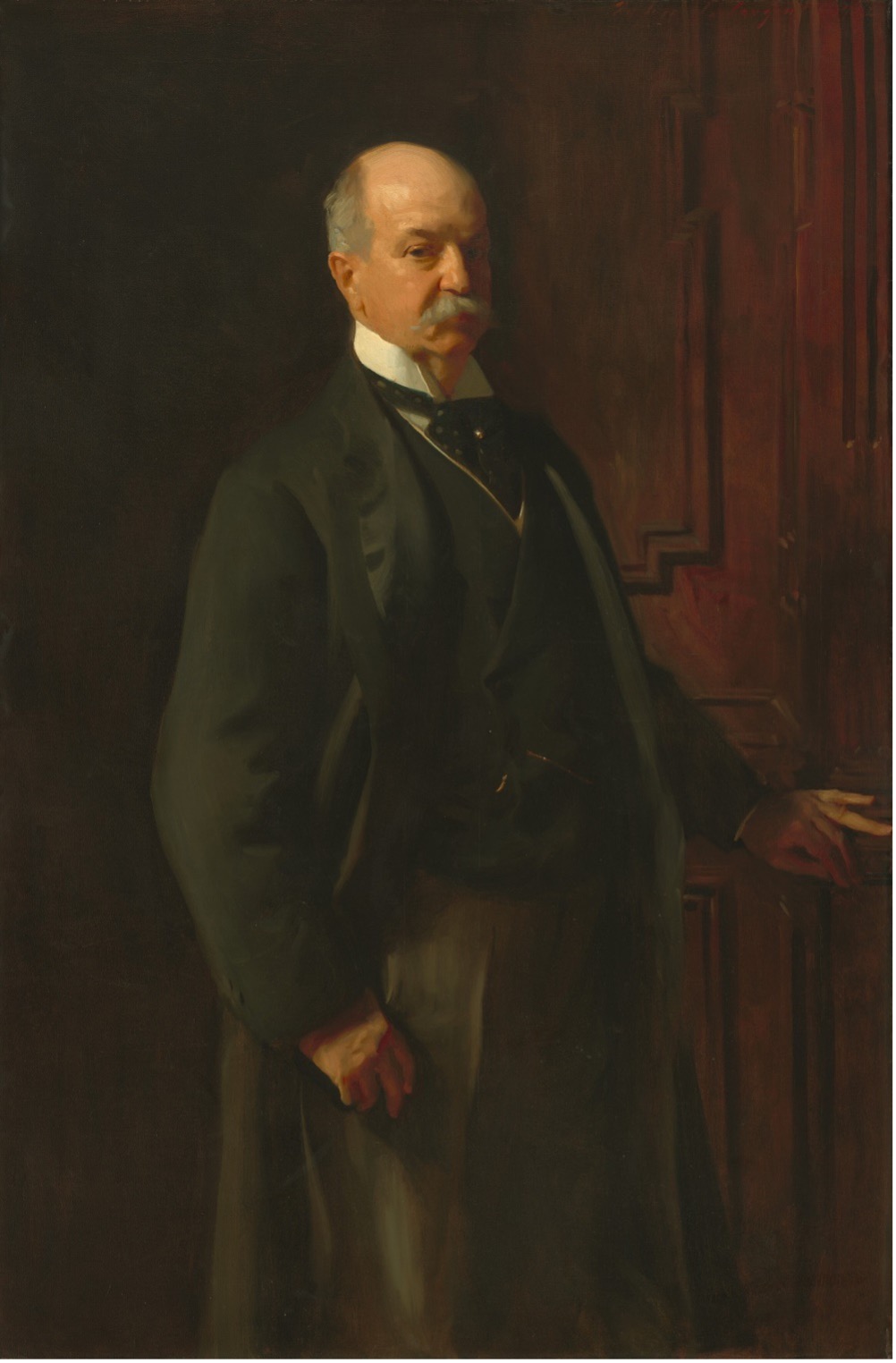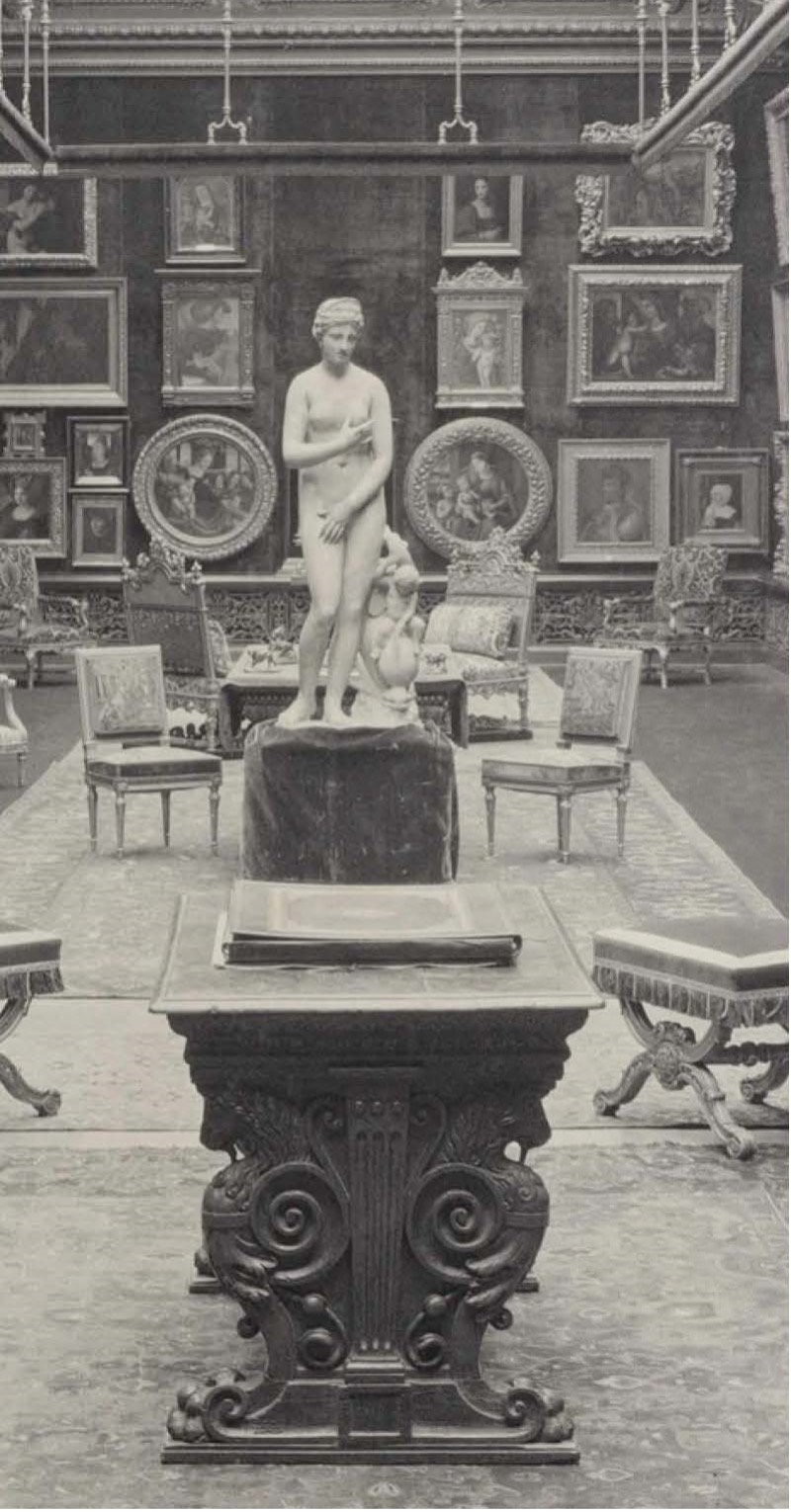


Over the summer, I received an email from a former colleague. He had come across a black and white image of our Venus Pudica (2006.41.1A/B) inside a place called Lynnewood Hall. I had never seen this picture before, and Lynnewood Hall was not part of the provenance information we had for Venus, so I was eager to explore this new chapter of her history.
Built between 1897 and 1900 in Elkins Park, Pennsylvania, Lynnewood Hall was designed by architect Horace Trumbauer for American businessman Peter A.B. Widener (1834-1915) to house both Peter’s family and his growing art collection. Peter grew up in a working-class neighborhood of Philadelphia and trained as a butcher. After establishing a successful chain of butcher shops, he expanded his business portfolio by co-founding the Philadelphia Traction Company (later the Philadelphia Transportation Company) which consolidated and modernized Philadelphia’s street rail system. With successful business and robust investments, Peter became one of the wealthiest men in America.
Peter’s wealth allowed him to build a significant art collection that included antiquities as well as works by Degas, El Greco, Monet, Raphael, and Rembrandt. When his son George (1861-1912) travelled to Paris in 1912 to find a chef for the new Ritz-Carlton in Philadelphia, he also spent time looking for works to add to the family collection. With business concluded, George, wife Eleanor, son Harry, and the family’s two servants Edwin Keeping and Amalie Gieger set sail to America on the new luxury ocean liner Titanic. George, Harry, and Edwin would never make it back home.
After the death of his son and grandson, Peter’s health was never the same, and he died at Lynnewood Hall in 1915. The estate as well as the art collection were left to Peter’s only surviving child Joseph (1871-1943), who opened Lynnewood Hall’s galleries to the public from 1915 until 1940. In 1942, he donated over 2,000 works to the new National Gallery of Art in Washington DC. The rest of the collection was auctioned off after his death.
Right now, I’m working under the hypothesis that our Venus was sold at one of the posthumous actions. However, it is entirely possible she was sold privately before 1943. It’s exciting that the connection to the Widener family has opened another line of research into her story!




